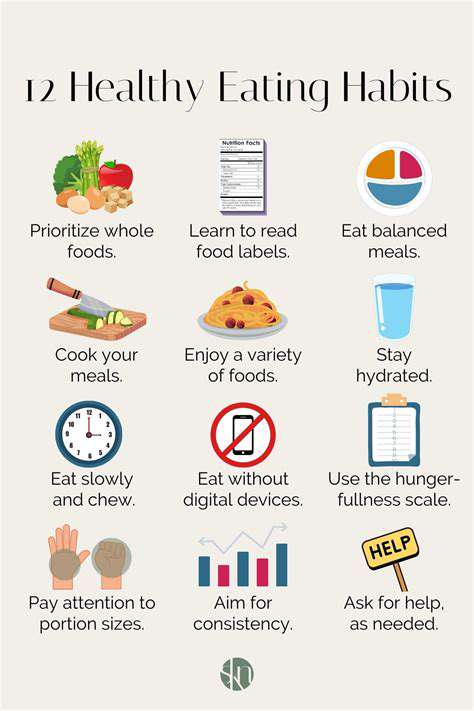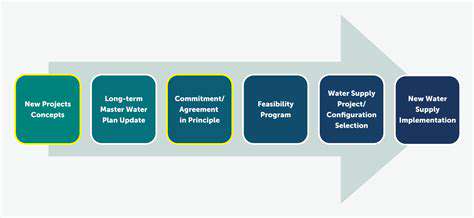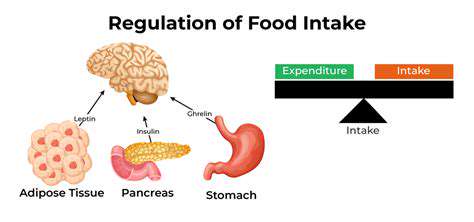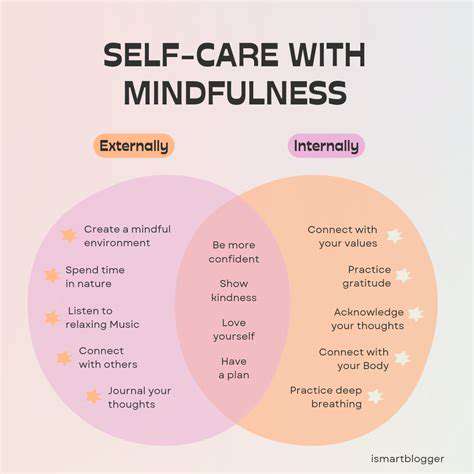Crafting Your Personalized Schedule for Optimal Energy
Identifying Your Energy Peaks and Troughs

Understanding Your Body's Natural Rhythms
Understanding your body's natural energy rhythms is crucial for maximizing productivity and overall well-being. Your body's internal clock, or circadian rhythm, plays a significant role in regulating energy levels throughout the day. Paying attention to when you naturally feel energized and when you experience dips in energy can help you structure your day more effectively and avoid feeling overwhelmed or unproductive.
Recognizing these patterns allows you to schedule tasks and activities that align with your peak energy times, leading to better performance and a more satisfying experience. This awareness also enables you to strategically address periods of lower energy, potentially through breaks, adjustments in your schedule, or proactive measures to enhance your energy levels.
Identifying Your Morning Energy Levels
Morning energy levels vary significantly from person to person. Some individuals wake up feeling refreshed and ready to tackle the day, while others experience a more gradual increase in energy throughout the morning. Understanding your personal morning energy pattern is key to optimizing your morning routine and maximizing early-day productivity.
Are you a morning lark or a night owl? Understanding this can help you structure your morning routine accordingly. If you're a morning person, schedule demanding tasks for the early hours. If you're a night owl, schedule less demanding work for the morning and save the more complex tasks for later in the day.
Leveraging Your Afternoon Energy Surge
Afternoon energy often represents a second wave of productivity for many individuals. This surge in energy, typically occurring a few hours after lunch, can be a golden opportunity to tackle challenging tasks or projects. Capitalizing on this afternoon energy surge can lead to significant progress and a sense of accomplishment.
Strategically scheduling important meetings, brainstorming sessions, or complex problem-solving during this period can maximize your efficiency and output. Adjusting your schedule to coincide with this natural peak can significantly improve your daily output.
Recognizing Post-Lunch Slumps
Many people experience a dip in energy levels shortly after lunch. This post-lunch slump can be attributed to various factors, including digestion, blood sugar fluctuations, and the body's natural rest cycles. This temporary dip is perfectly normal and shouldn't be viewed as a sign of weakness or inefficiency.
Recognizing and accepting this natural phenomenon allows you to proactively adjust your schedule. Schedule less demanding tasks during this period, such as less complex work, emails, or administrative duties, and plan for a short break to help regain focus and energy.
Strategies for Maintaining Consistent Energy
Maintaining consistent energy levels throughout the day requires a multi-faceted approach. A balanced diet rich in nutrients, adequate hydration, regular exercise, and sufficient sleep are all vital components. Implementing these strategies can significantly impact your overall energy levels and help you manage energy fluctuations more effectively.
Prioritizing stress management techniques, such as mindfulness exercises or short breaks throughout the day, is essential. Consistent energy levels contribute to mental clarity and focus, ultimately leading to better performance in all areas of your life.
Optimizing Your Evening Energy for Relaxation
Understanding your evening energy levels is important for winding down and preparing for a good night's sleep. Many people experience a decrease in energy as the day progresses, and it's crucial to recognize and respect this natural pattern.
Schedule less demanding activities in the evening to allow your body to transition into a relaxed state. Avoid intense mental stimulation or strenuous physical activity too close to bedtime. This will help to promote better sleep quality and ensure you wake up feeling refreshed and ready to start the next day.
Review and Adjust Regularly
Reviewing Your Schedule
Regularly reviewing your schedule is crucial for maintaining a personalized plan that aligns with your energy levels and priorities. This involves more than just glancing at your calendar; it necessitates a deep dive into how you're spending your time and whether those activities are contributing to your overall well-being and energy levels. Are you consistently feeling drained after certain tasks? Are you leaving room for activities that rejuvenate and energize you? Honest self-assessment is key to identifying areas where adjustments are needed.
Take some time to reflect on how your current schedule feels. Are you consistently feeling rushed or overwhelmed? Are there pockets of time where you feel stagnant or unproductive? Identifying these patterns is the first step toward making meaningful changes. This review process should be flexible and adaptable, allowing for adjustments based on how you feel each day and any unforeseen circumstances.
Adjusting for Energy Peaks and Valleys
Understanding your natural energy cycles is essential to optimizing your schedule. Do you tend to feel most energized in the morning or afternoon? Knowing these patterns allows you to schedule demanding tasks during your peak energy periods and allocate less demanding activities to times when your energy is lower. This proactive approach helps you maximize productivity and avoid burnout.
Consider incorporating short breaks and activities that revitalize you throughout the day. If you experience a dip in energy in the afternoon, schedule a short walk, listen to music, or engage in a light stretching routine. These small adjustments can significantly impact your overall energy levels and help you maintain focus and productivity throughout your day.
Furthermore, recognize that energy levels fluctuate based on various factors, including your diet, sleep, and stress levels. Your schedule should be dynamic enough to account for these fluctuations. A flexible approach allows you to adapt to changing energy levels, preventing burnout and maximizing your overall well-being.
Adapting to Unforeseen Circumstances
Life is unpredictable, and your schedule should be flexible enough to accommodate unforeseen circumstances. Unexpected events, such as appointments, family emergencies, or unexpected work demands, can easily disrupt your carefully crafted plan. Building in buffer time and alternative options for tasks is essential to maintaining a sense of control and preventing feelings of overwhelm.
The ability to adapt is a key component of a successful personalized schedule. Being proactive in anticipating potential disruptions, even if minor, will help you stay organized and prevent your schedule from becoming a source of stress. For example, if a meeting runs longer than expected, having a backup plan for other tasks or commitments allows you to maintain a sense of control and prevents the feeling of being completely off-track.
Prioritizing and Delegating Effectively
Prioritizing tasks based on urgency and importance is a crucial element of a well-functioning schedule. Not all tasks are created equal, and understanding which tasks require immediate attention and which can be delegated or rescheduled is vital to maintaining a sense of calm and focus. A clear understanding of your priorities ensures that you are directing your energy toward the most crucial aspects of your day.
Learn to delegate tasks whenever possible. Delegation not only lightens your workload but also allows you to focus on tasks that require your specific skills and expertise. This frees up mental space and reduces stress, allowing you to approach your schedule with a greater sense of calm and control.
Read more about Crafting Your Personalized Schedule for Optimal Energy
Hot Recommendations
- Customized Sleep Schedules: AI Driven for Sustainable Rest
- Crafting a Personalized Productivity Plan for Mental Clarity
- Sustainable Self Compassion: Cultivating Kindness Towards Your Mind
- Sustainable Productivity Hacks for the Busy Professional
- Sustainable Wellness for Parents: Balancing Family and Self Care
- Data Informed Self Care: Designing Your Personalized Wellness Strategy
- Sustainable Wellness for a Purpose Driven Life
- AI Assisted Mindfulness: Personalized Meditations for Deeper Practice
- Building Inclusive Mental Health Services: Key Initiatives
- AI Powered Self Care: Customizing Your Routine for Maximum Impact











